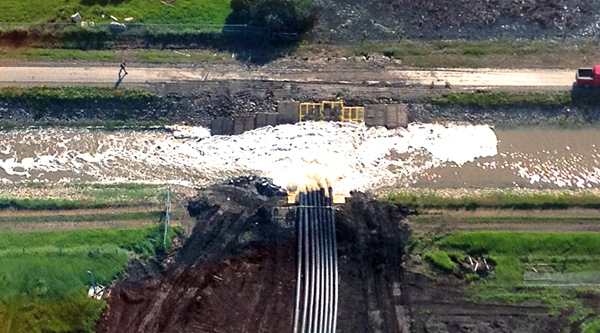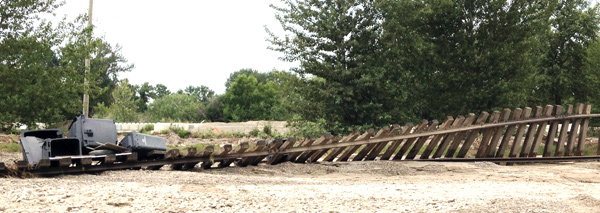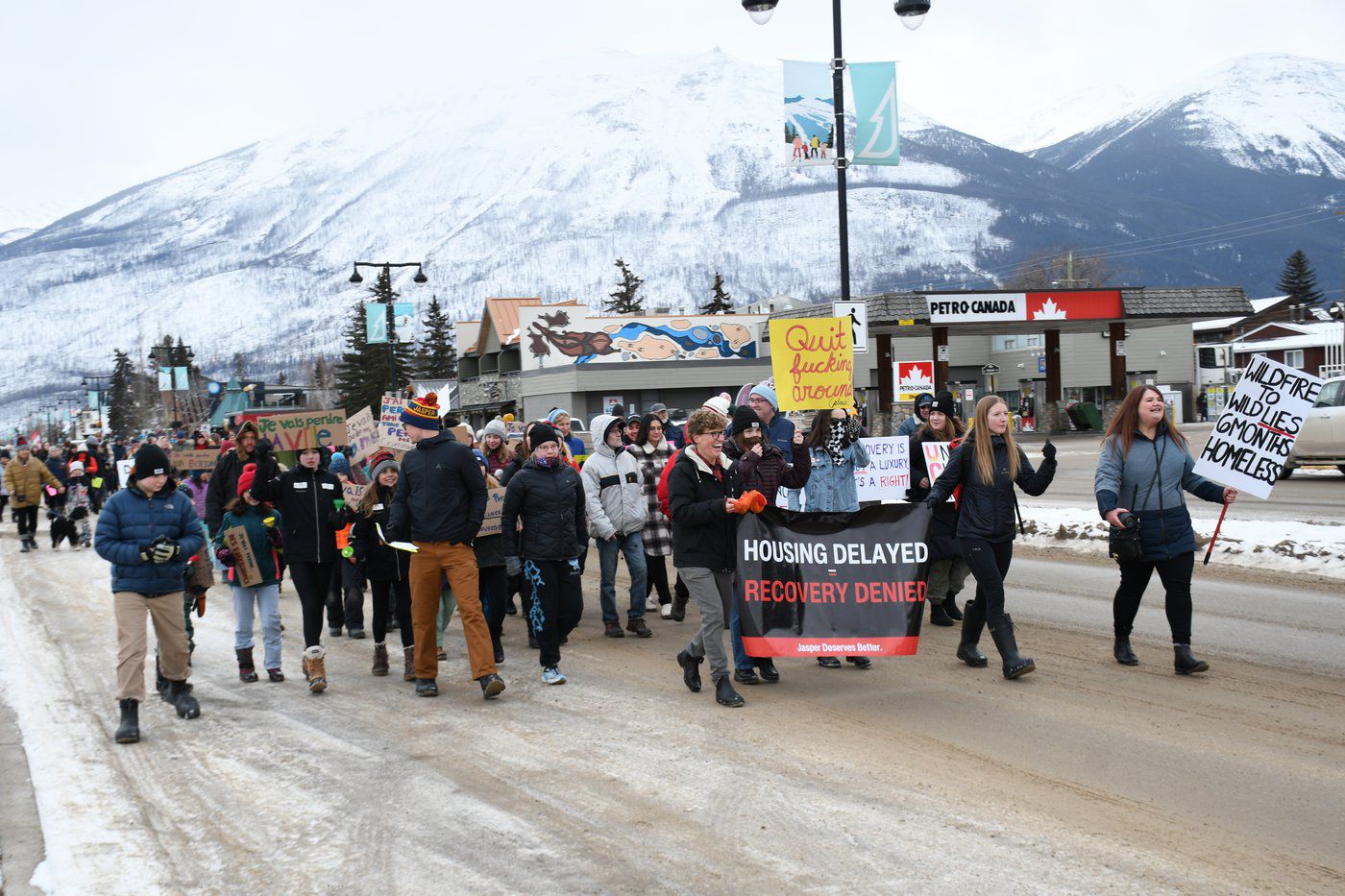Killam Public Works Superintendent helps in High River

Dean Berrecloth, Public Works Superintendent for the Town of Killam, just returned on July 7 from a week in High River, where he assisted in clean up after massive flooding in the town.
Berrecloth is the Vice-President of the Alberta Public Works Assoc., (APWA) and as soon as the flooding occurred, he was in touch with the organization’s president Patty Podoborozny.
They quickly started to set up a resource list of public works departments in Alberta to use for this and future provincial emergencies.
“The day after the flooding, we were ready to go at a moment’s notice,” Berrecloth says.
When the province declared a state of emergency in High River, which trumps the municipality’s state of emergency, Berrecloth says the call came out Sunday and Monday for assistance.
He says some had already sent assistance, like Strathcona County, St. Albert, and Ft. Saskatchewan, as well as some southern Alberta municipalities.
Responding to Monday’s call, Berrecloth double checked with Killam to ensure he had the town’s approval to go, then car pooled south with a Public Works employee from Lloydminster.

When they arrived in High River, they were briefed by Canadian Public Works Assoc. President Darwin Durnie, and were assigned accommodation by the Department of Sustainable Resources (SRD).
Berrecloth says that there were four major groups working together, the RCMP, SRD, personnel working with the Emergency Operations Centre (EOC), like himself, and those given all-access.
Wednesday morning, Berrecloth and other PW personnel met with the Operations leader, whisked through security, and then put to work. Without a security pass, he says, you weren’t allowed to go anywhere in High River.
Berrecloth says he worked in utilities, coordinating over a dozen vacuum trucks.
“When we got there, some lift stations were still under water.”
He says that some of the town’s lift stations were functioning, so water was pumped to areas where it could be drained away.
“I got down there thinking I would be running equipment and spelling people off,” he says, but found out afterwards that Podoborozny had classified the team as supervisory.
The day Berrecloth arrived in High River, the temperature had reached 34 degrees, and he says even now, when he hears “High River” it’s immediately followed by the memory of the unpleasant smells.
“It smelled horrible. Areas were without power, lift stations were down, piles of rotting straw were in the streets, and people had dragged out their fridges and freezers to be hauled away.”
Berrecloth says experts are thinking that some natural barrier on the south side of the river may have let go, resulting in water flooding back south through agricultural areas before ending up in the East and Wallaceville section of the town, parts of which still remain under water.
He says the mud left behind in the areas drained of water is all contaminated, hazardous material that needs to be removed.
Berrecloth says that as vac trucks were pumping up water, workers were spraying the streets with clean water as the mud was caked on.
“When the silty soil was wet, it was slick, like driving on ice,” he said.
Special barges with pumps were brought into the heaviest areas of flooding, where at their peak they were pumping out 86,000 gallons of water per minute, or 110,000,000 gallons per day. “You could fill an Olympic-sized swimming pool in six minutes with that kind of volume,” Berrecloth says.
“The amount of water running through their partially operating water treatment facility in one day,” he says, “is comparable to what the Town of Killam would see over five years.”
Berrecloth said he heard it said that per capita, the devastation surpassed that done by 2005’s Hurricane Katrina, the gulf storm that swamped much of New Orleans.
“It’s going to take years to clean up.” He was very impressed by High River town employees while there. “Probably every person on the town staff lost a house themselves.
“Not only were they dealing with the widespread devastation from the flood, but each had their own losses to deal with as well.”
Berrecloth says the sheer force of manpower working on the town was quite amazing, with around 1,200 armed forces personnel, RCMP, SRD personnel, public works personnel and contractors, as well as Fortis and ATCO and other utility workers, as well as support staff. He said every person and piece of equipment had to complete a time sheet.
“I can’t wait to see the actual cost of the massive amount of manpower needed.”
Berrecloth says that by Friday, July 5, you could see things winding down, with water levels down substantially, and as they let people back in, and volunteers in the thousands swarmed the town. “It was almost too many people,” he said, backing up traffic; that’s when he thought, “It’s time to leave.”
One of the highlights of his trip was taking a helicopter ride over the town, a first time for him, and something that really made the scope of the devasation very clear.
Berrecloth and the rest of the APWA members will use their newly formed provincial resource model to work on a Western Canada resource list now, he says, with BC, Alberta, Saskatchewan, Manitoba, and the territories pooling resources in case of future natural disasters or emergencies.
In his second year as Vice-President, Dean will take over the President position this fall, for a two year term, followed by a two year President-elect term.
The APWA was formed in 1979, with 412 active members from around the province.
“That number is changing monthly as more municipalities are joining us,” he says. The provincial association is a member of the Canadian association, as well as a chapter of the American association.
Berrecloth is glad that the Town of Killam was willing to allow him to spend the time in High River, and says he found the whole experience very rewarding both personally and professionally.
“Would I do it again? In a heartbeat.”
Leslie Cholowsky, Editor









